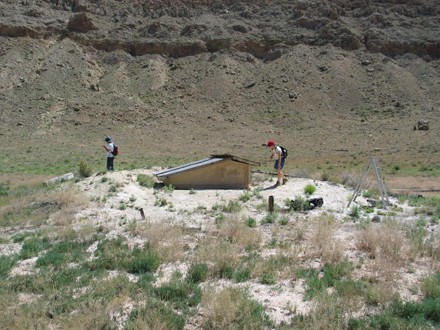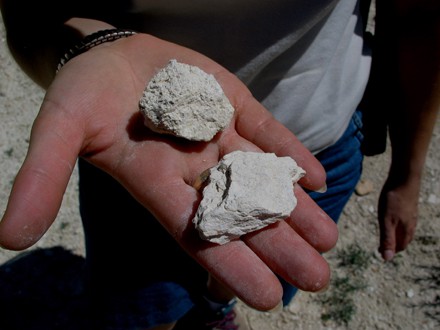The photo below is of another old shaft that was used for drilling in the early 1900’s. It is easily recognizable by the surrounding light-colored material that was excavated from the shaft. This is actually a great place to collect pieces of highly shocked Coconino sandstone . These pieces shown in the photo on the right resemble volcanic pumice , but are so light that they float in water! The Coconino sandstone is normally a dark dense rock, but not here. The reason why they are so light is due to the air spaces or bubbles formed in the rock when it was compressed by the impact’s shock wave and then uncompressed.
| Mound of excavated Coconino sandstone Photo: G. Osinski, Canadian Space Agency Location: On the floor of the impact crater Scale: Height of the ladder is approximately 2.5 meters |  |
| Pieces of shocked Coconino sandstone Photo: G. Osinski, Canadian Space Agency Location: On the floor of the impact crater Scale: Width of hand samples are several centimeters |  |
